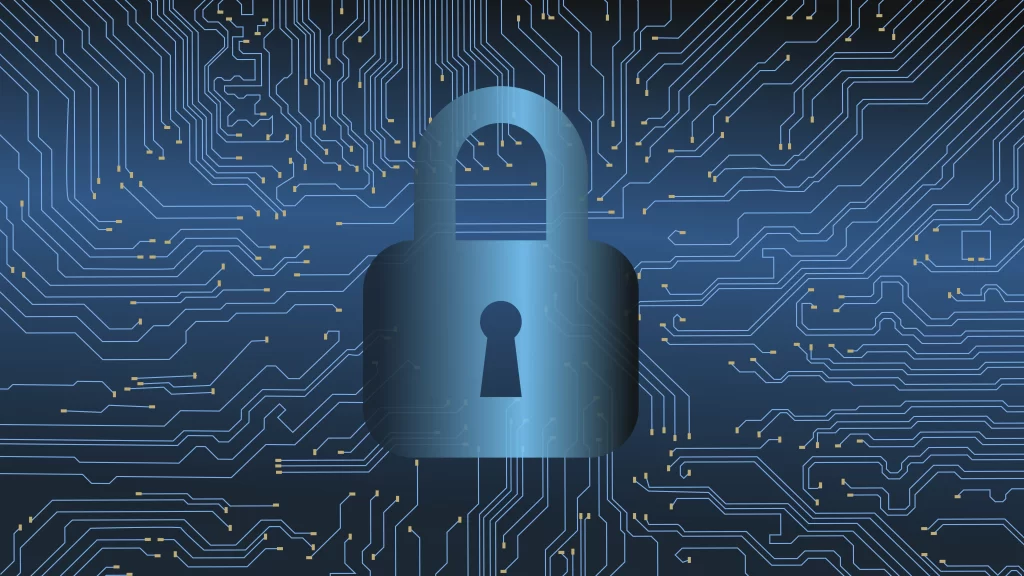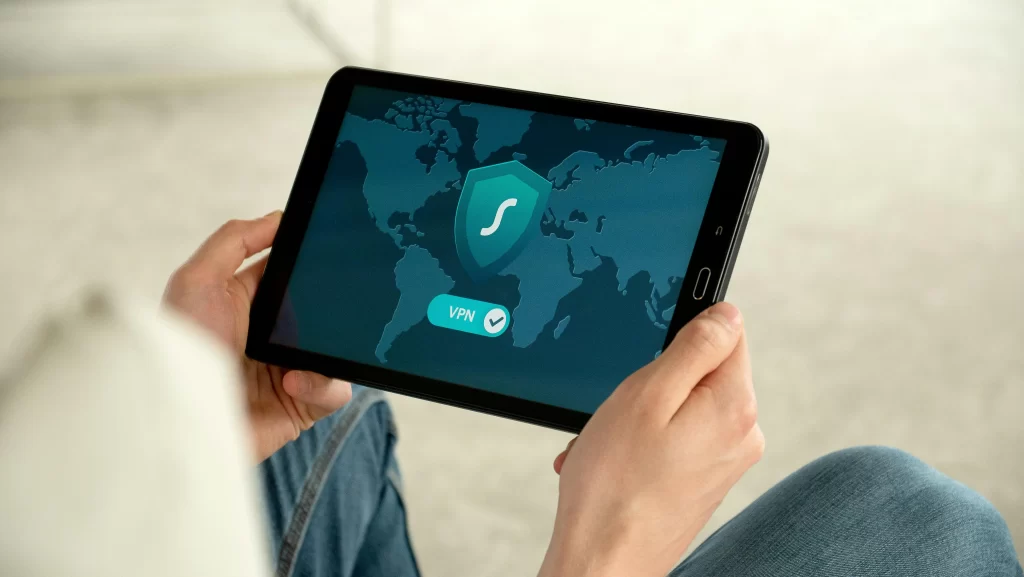Imagine registering a website and unknowingly exposing your personal email, phone number, and address to the entire internet. This scenario is common when you register a domain name without extra safeguards. Domain privacy (also known as WHOIS privacy) is a service that prevents this exposure by hiding the domain owner’s personal contact information from public view. In simple terms, domain privacy replaces your details in the public registration database with proxy details, keeping your identity and contacts invisible to strangers. It ensures you remain the owner of the domain, but only you and the privacy service know your real contact information. This layer of privacy is more than a convenience – it’s a crucial security measure for anyone who owns a domain name. Read this article from 1Byte to learn more.
Understanding How Domain Privacy Works

To understand what is domain privacy, it helps to know how domain registrations normally work. When you register a domain, you must provide accurate contact information, including your name, organization (if any), physical address, email, and phone number. Registrars collect this data as part of the registration process. By default, these details are published in the public WHOIS database (now often referred to as the RDDS – Registration Data Directory Services). The WHOIS system is essentially a global address book for domains, listing who owns each site. Anyone can look up a domain’s WHOIS record to see the owner’s contact info – unless domain privacy is enabled.
With domain privacy protection, your registrar or a privacy service replaces your personal info with its own generic information in the public record. For example, instead of showing Jane Smith, 123 Main St, [email protected], the record might display the registrar’s privacy service name, a P.O. box or proxy address, and a forwarding email. You still retain full ownership and control of the domain, but prying eyes cannot see your real contact details. This means spammers, fraudsters, or data scrapers who pull information from WHOIS will only see the proxy details, not your data. Domain privacy is usually activated as an optional add-on during registration (or can be turned on later), and many registrars now include it for free by default as part of their service.
It’s important to note that domain privacy does not mean providing false information. In fact, using fake names or emails in a domain registration is against ICANN rules and can lead to losing the domain. Your information on record must be valid – domain privacy simply hides it from the public. For instance, one domain registrar explains that if you register a domain as an individual with no privacy, you could be “flooded by spam, calls, and even junk mail” after your details go public. Yet you cannot use fake information to avoid this, as that can cause verification problems and is illegal under policy, “This is where WHOIS Privacy Protection comes in.” In short, domain privacy is the legitimate way to keep your contact data confidential while complying with registration requirements.
Why Domain Privacy Matters for Online Security

Domain privacy isn’t just about anonymity – it directly impacts your online security and personal safety. Here are several key reasons why enabling privacy on your domain matters:
Protecting Personal Information from Exposure
By default, WHOIS data is public, meaning anyone can retrieve a domain owner’s name, address, email, and phone number. This unrestricted exposure is risky. Keeping this information private guards you against a variety of threats. In fact, the vast majority of domain owners worldwide now choose to hide their identifying details. As of early 2024, only about 10.8% of domain records still showed the registrant’s real name, down from 75.7% that did so in 2018. In other words, over 89% of domains use some form of privacy or redaction – it has become the norm for security reasons. If you don’t enable privacy, you’re essentially leaving your personal data out in the open, unlike most other domain owners today.
Reducing Spam and Scams
One of the first things many new domain owners notice is a surge in spam emails and calls after registration. This is not a coincidence – spammers scrape public WHOIS directories for addresses and phone numbers. Studies have quantified this problem. Domains with public registration data receive an average of 12.76 spam emails per domain, whereas domains with private (redacted) data get virtually none (only about 0.12 spam emails on average). That is a staggering difference. Exposed email addresses are quickly added to spam lists, and phone numbers may receive robocalls or marketing cold calls. Some less reputable parties even compile and sell WHOIS contact lists, leading to unsolicited sales pitches and phishing attempts targeting domain owners.
By enabling domain privacy, you prevent address harvesters from getting your info. Your inbox and voicemail stay much cleaner, and you greatly reduce the attack surface for scammers. Legitimate inquiries can still reach you through proxy email forwarding (or web forms), but automated spam bots are mostly foiled. This spam protection is often the first benefit users notice – domain privacy immediately cuts down unwanted emails, calls, and even physical junk mail that result from public WHOIS data.
Thwarting Phishing and Fraud Targeted at Owners
Public WHOIS details don’t just invite generic spam – they can attract targeted attacks. Hackers and fraudsters often use the information in WHOIS to craft personalized phishing schemes. For example, if your admin email is visible, an attacker might send a convincing fake message to that address pretending to be your registrar or hosting company. There have been cases of emails telling domain owners to “verify” or “renew” their domain via a link, which actually steals their login credentials. Domain privacy helps here by masking the exact email tied to your domain, so attackers can’t easily identify which address to target. As one security guide explains, “A straightforward lookup in the public WHOIS database… will give an attacker the admin email… Anyone listing their contact information in WHOIS is giving out the back door to hijacking their domain.”
In practice, many domain hijacking incidents begin with attackers harvesting owner data from WHOIS and then using social engineering. They might impersonate the owner in communications with the registrar or attempt to hack the owner’s email account. By hiding your email and name, domain privacy removes a key resource that hackers use to execute such attacks. It effectively blocks them from accessing the information they need to impersonate you or breach your accounts. This significantly lowers the risk of phishing emails, fraudulent domain transfer requests, or other cons aimed at you as the domain holder.
Preventing Identity Theft and Domain Hijacking
Exposed domain data can lead to identity theft in the wrong hands. Cybercriminals might use your name, address, or phone (combined with other leaked data) to commit fraud or steal your identity online. Even more directly, there is the threat of domain hijacking – where someone illegitimately gains control of your domain registration. One common hijacking tactic is to gather personal details about the real owner (often via WHOIS) and then use that information to impersonate the owner in requests to the registrar. For instance, a hijacker might call your domain registrar’s support line, pretend to be you, and use your own address or phone number as “verification” information to convince them to change account details.
Domain privacy helps shut down this avenue. If your details aren’t publicly visible, it’s much harder for an attacker to successfully impersonate you or even know who the registrant is. Major domain providers explicitly note that privacy protection helps guard against “fraudulent domain transfers” – attempts by bad actors to unauthorizedly transfer your domain away. In summary, keeping your ownership info private adds a layer of defense against hijackers. It forces them to find other, more difficult ways to try to access your domain (like hacking, which strong passwords and 2FA can mitigate), rather than simply social-engineering using your personal data.
Avoiding Harassment and Personal Threats
For individuals, having one’s home address or personal phone exposed online can lead to safety and privacy issues beyond the digital realm. There have been cases where domain owners faced harassment once someone looked up their WHOIS info. If you run a personal blog or a controversial website, for example, an antagonistic person could retrieve your address or number and use it to stalk or harass you. Even for average website owners, it’s unsettling to know anyone can find out where you live or reach you directly without consent.
Domain privacy shields you from these risks. It keeps your home address and phone confidential, which can prevent stalking, harassment, or even physical threats against you or your family. Privacy is especially vital for at-risk groups – journalists, activists, or anyone who might be targeted for what they publish online. By masking personal identifiers, domain privacy adds a protective buffer for your personal life. It ensures that owning a website doesn’t inadvertently expose you to offline security risks or unwanted attention. In essence, it lets you maintain anonymity when needed, so you can run your site without fear of random people showing up at your door or calling you out of the blue.
Complying with Privacy Laws and Norms
In today’s regulatory environment, keeping personal data private isn’t just a preference – it’s often a legal requirement. The introduction of the EU’s General Data Protection Regulation (GDPR) in 2018 dramatically changed domain data practices worldwide. Under GDPR and similar laws, personal information of individuals must be protected and not published without consent. As a result, ICANN (the organization overseeing domain registrations) directed registrars to redact personal details in public WHOIS records for users covered by GDPR. This led to a huge shift: before GDPR, only about 24% of domains were privacy-protected; a few years after, roughly 86% of domain records became hidden via redaction or proxies. Many registrars extended privacy-by-default to all customers, not just those in Europe. Using domain privacy can thus help ensure you’re not inadvertently exposing data in violation of privacy regulations.
In some regions, failing to shield personal data could even result in penalties. Additionally, showing that you handle personal info responsibly (even your own) reflects well on your business’s compliance posture. It’s worth noting that some domain extensions (TLDs) do not allow privacy services – particularly certain country-code TLDs have rules requiring public data. For example, .us (United States), .ca (Canada), .uk (United Kingdom) and many other country domains prohibit opting out of public WHOIS. This is due to their registry policies. If you use such a TLD, you’ll have no choice but to list real contact information. In those cases, one must weigh the privacy trade-off or take extra steps to secure personal data (like using a business address or P.O. box). However, for the vast majority of generic domains (.com, .net, .org, etc.), domain privacy is available and highly recommended to stay in line with modern privacy expectations.
Additional Benefits (Trust and Professionalism)
Aside from direct security, domain privacy can offer some ancillary benefits. It can signal to savvy visitors or clients that you take privacy seriously, which might increase their trust in your site. Also, with privacy on, competitors or data miners cannot easily look up all the domains you own by searching your name – this prevents them from gleaning intelligence about your projects or holdings. While this may not matter to everyone, it’s a plus for businesses that own multiple domains and prefer to keep their portfolio less exposed.
Overall, using domain privacy is seen as a professional standard practice today. Many experts view it as a simple but important step in securing your online presence, similar to using SSL encryption or strong passwords. It demonstrates a proactive approach to cybersecurity and personal data protection, which is increasingly expected in the digital age.
New Statistics Highlighting Domain Privacy’s Impact

To underscore how vital domain privacy has become, consider some recent data and trends:
Soaring Adoption of Privacy Services
Over the last few years, there’s been a remarkable increase in domain owners using privacy or proxy services. A 2024 industry report found that nearly 90% of generic TLD domains now lack identifiable contact info in public records. In early 2018 (pre-GDPR), about 75% of domains listed the owner’s name; by early 2024, only about 10.8% did so. This means almost nine in ten domain owners worldwide are choosing to keep their data hidden. Much of this change was driven by privacy regulations and registrar policies evolving. Notably, major registrars began offering free WHOIS privacy to customers.
Of the 20 largest registrars (covering 70% of domains), a majority now provide free privacy/proxy protection, removing the cost barrier for users. This democratization of privacy protection shows that it’s no longer a premium add-on, but an expected feature. The result is a safer environment where spammers and attackers have a harder time gathering data (as evidenced by the spam reduction stats mentioned earlier). In fact, since contact data started disappearing from public WHOIS, scammers have struggled to find victims and had to resort to alternative methods, according to security observers. This is a positive trend: it indicates that widespread use of domain privacy is actively thwarting malicious actors who relied on easy access to WHOIS data.
Spam and Attack Rates With vs. Without Privacy
The experiment cited earlier provides a concrete metric – domains without privacy received over 100 times more spam emails on average than those with protected info. This stark contrast is backed by real-world behavior. As another example, some new domain owners report getting telemarketing calls within hours of registering a domain without privacy, often from dubious “SEO services” or web design agencies that scan new registrations. Public data makes you a target within days or even minutes of going live.
By contrast, enabling privacy can keep you virtually invisible to these opportunists. It’s not just anecdotal; the numbers bear it out. Security companies and researchers have long noted that WHOIS contact data is a major contributor to spam volumes – essentially fuel for spam engines. Removing or hiding that data has an immediate effect in cutting off one supply line for spammers. Furthermore, privacy services typically provide a safe communication channel (like a web form or masked email) so that genuine inquiries can reach the domain owner without exposing them to spam bots. This balance allows important communications (from customers, partners, or even law enforcement) to still get through, while keeping bad actors at bay.
Case Evidence of Enhanced Security
While exact incidents are often kept private, experts have documented how domain privacy could have prevented certain breaches. For instance, in some domain theft cases, the thief exploited knowledge of the owner’s details (from WHOIS) to impersonate them. Had the information been private, the attack might not have succeeded as easily. Similarly, companies have experienced targeted phishing where the attacker knew the domain administrator’s name or email from public records – something privacy would have masked.
These scenarios reinforce that domain privacy isn’t theoretical; it has practical impact. As one registrar’s security team put it, WHOIS privacy “shields your personal information from spammers, identity thieves, and cyberstalkers”. Each of those is a very real threat category. Spammers we have covered; identity thieves seek personal data to commit fraud; cyberstalkers might use contact info to harass or intimidate. By stopping all of these at the source (the public data), domain privacy has proven to be a critical safeguard in the broader cybersecurity toolbox.
Best Practices and Final Thoughts
Enabling domain privacy is typically straightforward – most domain registrars allow you to toggle privacy on with a simple setting or during the checkout when buying a domain. Given the numerous benefits, it’s wise for general internet users, bloggers, entrepreneurs, and businesses alike to use this feature. Here are a few best practices and considerations regarding domain privacy:
- Always opt for privacy when available: Unless you have a specific reason to publicly advertise your contact (which is rare – even big companies often use generic addresses), it’s best to keep your info hidden. The security and peace of mind gained far outweigh any benefits of public listing. Many registrars now include privacy by default because it’s considered an industry best practice.
- Know your domain’s policy: As mentioned, some domain extensions (especially certain country codes) do not permit privacy services. If you’re using such a TLD, be aware that your details will be public and take extra precautions. You might use a business address or dedicated email for the registration to avoid exposing your personal home info. Always check if your chosen domain supports privacy – most do, but it’s worth verifying for less common extensions.
- Use privacy along with other security measures: Domain privacy greatly reduces the chances of social engineering and spam, but it should complement other steps. Secure your domain registrar account with a strong password and two-factor authentication (2FA) to prevent unauthorized access. Keep your domain contact email secure (use 2FA on that email as well) because if someone does somehow discover it, you want it locked down. Consider domain lock features (which prevent unauthorized transfers) for an added layer. Domain privacy addresses one big risk area – public data – and when combined with these measures, your domain becomes much harder to attack or steal.
- Regularly renew your privacy (if not automatic): Ensure that your domain privacy service remains active as long as you own the domain. Lapses could temporarily expose your info. The good news is many providers have made privacy free for life on domains, so you don’t have to worry about it expiring separately. Still, it’s wise to double-check that privacy status stays “ON” in your account, especially after any domain transfers or changes in registrars.
Leverage 1Byte’s strong cloud computing expertise to boost your business in a big way
1Byte provides complete domain registration services that include dedicated support staff, educated customer care, reasonable costs, as well as a domain price search tool.
Elevate your online security with 1Byte's SSL Service. Unparalleled protection, seamless integration, and peace of mind for your digital journey.
No matter the cloud server package you pick, you can rely on 1Byte for dependability, privacy, security, and a stress-free experience that is essential for successful businesses.
Choosing us as your shared hosting provider allows you to get excellent value for your money while enjoying the same level of quality and functionality as more expensive options.
Through highly flexible programs, 1Byte's cutting-edge cloud hosting gives great solutions to small and medium-sized businesses faster, more securely, and at reduced costs.
Stay ahead of the competition with 1Byte's innovative WordPress hosting services. Our feature-rich plans and unmatched reliability ensure your website stands out and delivers an unforgettable user experience.
As an official AWS Partner, one of our primary responsibilities is to assist businesses in modernizing their operations and make the most of their journeys to the cloud with AWS.
Conclusion
In conclusion, domain privacy is a simple but powerful tool to enhance your online security. It answers the question of what is domain privacy in practice: it is your shield against unwanted exposure. By keeping your personal details out of public databases, it protects you from spam, scams, identity theft, and potential harassment. The latest statistics and real-world examples make it clear that domain privacy is not just an optional nicety – it’s fast becoming essential for anyone who values security on the internet. Fortunately, it’s also one of the easiest security measures to implement. With most registrars offering privacy protection (often at no extra cost), there’s little reason not to use it. In the era of data breaches and privacy concerns, domain privacy stands out as a proactive step that every domain owner should take to secure their online presence and peace of mind.

